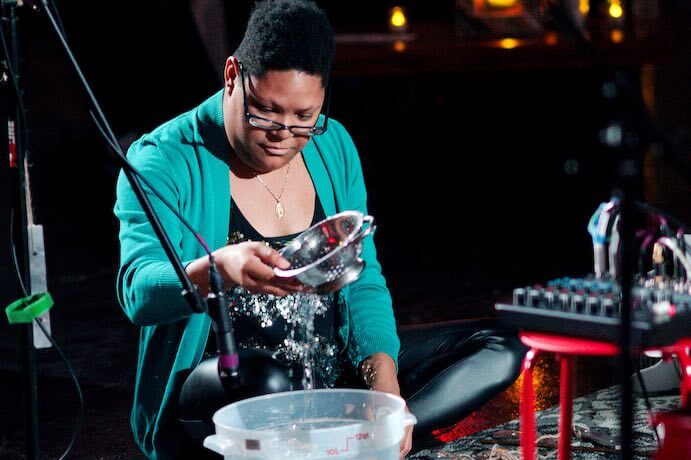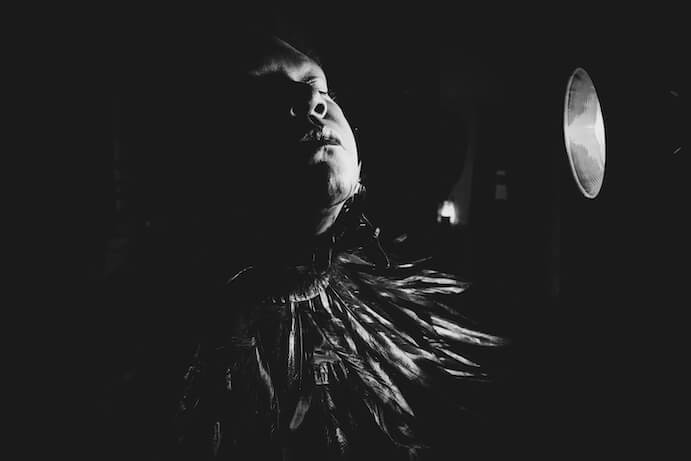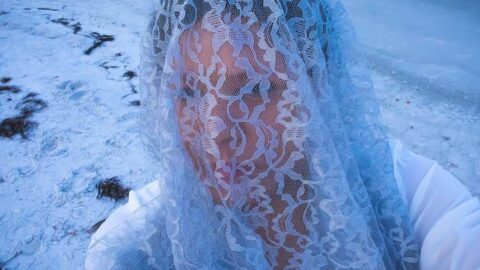Over the past decade, The Honorable Elizabeth A. Baker’s practice as a New Renaissance Artist has crossed styles, genres, and mediums through a “constant stream of change and rebirth in practice.” In recent years, Elizabeth’s resplendent artistic practice has resulted in three albums of her own genre-bending piano/electronic performances, several books about her practice and pedagogy, along with numerous compositions and videos. Elizabeth is a 2019-2020 ACF | connect awardee, through which she will present a performance with the AACM and the Great Black Music Ensemble in October 2021.
On March 20, 2021 at 8PM EST, Elizabeth partners with NYC-based Ensemble Ipse to present retrospectiveDisconnect, a digital event that premieres a retrospective documentary of Elizabeth’s work alongside a newly commissioned sound film. We asked Elizabeth five questions about the upcoming event and the process of reflecting on her career.
Can you talk about the origins of this project and the process of working with Ensemble Ipse as collaborators?
Ensemble Ipse approached me about commissioning a new sound film, but they also wanted to present a retrospective online concert to introduce people to my work. I felt that an online concert presentation of my work was inherently one dimensional and doesn’t really reflect or represent who I am as an artist. In getting back to my film and photography roots over the past year, I felt like this was an opportunity to start exploring my love of documentaries, and more than that, I wanted to address the impact that a voice outside of academia, that is imbued with BIPOC identities, has on the American musical landscape. I wanted to present archival footage of my work, but also pair it with real people who have interacted with those works. Ensemble Ipse has been supportive, but they really just allowed me to go off into my own and I’m really proud especially of the sound film [place] that will premiere as part of this documentary event, and then live separately on Ensemble Ipse’s New Music Gallery for a year.

How did you navigate weaving the many threads of your work as a New Renaissance Artist together in a single documentary?
As strange as this sounds, this three-hour documentary is just the beginning. I realise that films like this or rather series such as these need to be made. I understand this on a visceral level, because when I saw Pamela Z on YouTube in my 20s, it was profoundly life altering for me. I saw someone who looked like me doing new things that inherently challenged the aesthetics of this field that are driven by white barbarism and it was a quiet revolution. Later when I met Pamela Z in person, her genuine, humble, and caring nature inspired me and strengthened my sense of purpose.
Through the course of this film, I was confronted with how that same light that Pamela Z brought into my life, that subtle revolution of doing things against the expectation of what a Black female artist in America should be doing–pressing hard against that stereotype that says the scope of Black music is rapping and “jazz” and R&B, that it’s informed by the streets and the church and the oppression of slavery. But here are people like Pamela Z, Matana Roberts, Lisa E. Harris, Brittany Green, myself, and many others who are defying these close-minded tropes and presenting work and living lives that prove that Black joy, Black thought, and Black expression are boundless and as diverse as the experiences of the Black people who create these works.
Beyond that, from a technical standpoint I’ve already begun to work on increasing the production values and investing in a Netflix-approved cinema camera so that I can begin the process of creating collaborative documentary films about incredible BIPOC artists that can be released on major streaming platforms, to further the discussion about these phenomenal artists, but also to contribute to revolution by example in the minds of young BIPOC humans who are still pressed by societal expectations of what a brown child is capable of growing up to do. I’m greatly hoping that all of those inspiring women will be willing to work with me in the future to help tell their stories in a way that cannot be done by a well-meaning white film crew.

In 2020 you digitally released two sound films, [rice bowls] and Meander. How did you conceptualize this genre, and what can listeners expect from the new sound film on retrospectiveDisconnect?
Actually, I released several sound films beyond [rice bowls] and Meander. The 2020 sound film releases included soft. pink., typecast, and soft purple, as well as the bridge between my sound film practice and FIELD STUDIES Light Deviation Iteration Drone. I think that the idea of what a sound film is remains foreign to people, and there’s this notion that a sound film is just the recording of a musical happening or a “music video.” Sound films are driven by audio and visual happenings that are brought together, and whilst some sound films have synced integrated sound from video, they are largely created separately, in an unintentional collaboration in the style of Cage and Cunningham.
A sound film is, at it’s core, a non-narrative expression. It’s about experiencing the dance between two mediums that are juxtaposed with each other, sometimes in counterpoint, and other times in opposition with each other. But I’m not completely tied to that definition because it’s a relatively new form of expression for me, and if I had to choose some concrete manner to describe it, sound films are pieces of art in which both audio and visual components are equally considered in concept and construction where no one component is more important or integral, and neither element plays the role of accompanist, but rather each are equal collaborative creators. I hope there will be no expectations. I really abhor expectations because they inherently mar the beauty of existence with smudges of human prejudice whether good, bad, or neutral. Expectations create a box that closes in like a noose for an artist.
In the retrospectiveDisconnect trailer, you remark that because of your “focus on the present and the future,” creating a retrospective was a real “disconnect.” What have you been struck by or learned as you look back on your work thus far?
Black folx are not taught to rest. It wasn’t until I encountered the work of The Nap Ministry and had more time to delve into the practice of Lisa E. Harris that I truly understood how “hustle culture” is a tool of white barbarism and capitalism to continue the slavery mindset of our oppressed ancestors in the fields who were made to toil endlessly at the cost of their physical and mental health, who never felt that they deserved to rest because slavery mindset enforces racial inferiority and begets imposter syndrome, which lead to overworking as a means to find some feeling of worthiness.
I’ve never had the luxury or permission or privilege of nostalgia because I’ve had to work nonstop to get even a thousandth of the respect that my white peers are given earlier in their careers. It was difficult to look back because I remember a lot of the circumstances that surrounded those performances, and how difficult it was to overcome on my own. I think one of the things that was touched on in the film is that for years, I was touring the country as a solo artist with a lot of expensive gear, as a Black woman traveling through places that weren’t happy about my presence because it challenged the status quo. I find it remarkable that I just never let that bother me, that I was so driven by just doing what I do at the highest level of my ability in the moment, that if someone had come into one of those spaces to kill me because of my skin colour, I was ready to die as long as I felt that my work and my existence had paved the way for other tiny BIPOC humans behind me.
For many artists, retrospectives are a way to mark chapters or stages in their creative lives. As you return to looking ahead, what excites you about your artistic life, and where do you hope it will take you?
I don’t really see any part of my life as a closed chapter, and I can’t really say that there are markers. Being a new renaissance artist is about embracing a constant state of change and growth. As I touch upon in the film, there’s no end, only ends that are arbitrarily declared by humans because they love to fool themselves as the shapers of narrative and demigods of experience. But every thing, every energy, and every place expands out in all directions observable as well as undetected. The profound realisation that it’s not about humans–it’s not about our needs and wants–that our attempt to control the fundamental narrative of our species existence is like trying to mop up the ocean, the understanding that every single thing is interconnected and part of the energy mesh that forms every single part of this reality and countless others, is incredibly fascinating.
I always remain open to the path ahead. I don’t have specific roadside attractions marked on my map to see, because in taking the main roads to get to the destination as fast as possible, you miss the small things on the path. You never meet those who need your help, you miss that one-off conversation or event that changes your route, but you have faith that your ancestors are guiding you. You follow the light, you do the right thing, and you try to live without oppressing others. And when you finally reach that final destination bathed in light, it’s the closest thing to perfect bliss and understanding. That is to say, my artistic life is my life, not just a part but completely enmeshed with my being and open to all the possibilities.
I CARE IF YOU LISTEN is an editorially-independent program of the American Composers Forum, funded with generous donor and institutional support. Opinions expressed are solely those of the author and may not represent the views of ICIYL or ACF.
A gift to ACF helps support the work of ICIYL. For more on ACF, visit the “At ACF” section or composersforum.org.
























